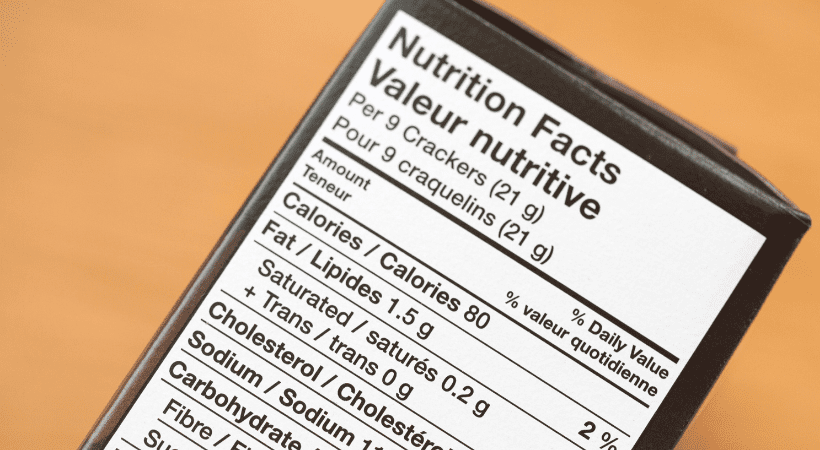Changes to England’s Bread and Flour Regulations: What you need to know
Changes to England’s Bread and Flour Regulations: What you need to know
In 2022, the UK Government and devolved administrations launched a UK-wide consultation on the proposed amendments to The Bread and Flour Regulations 1998 and The Bread and Flour (Northern Ireland) Regulations 1998, seeking views and further information on proposals to:
- Increase the minimum level of added nutrients to non-wholemeal flour and update criteria requirements for calcium carbonate added to flour
- Introduce the mandatory addition of folic acid to flour at 250 micrograms per 100 grams of non-wholemeal wheat flour
- Clarify that mandatory fortification applies to flour derived from common wheat only
- Exempt small-scale mills from the fortification requirements
- Exempt flour used as a minor ingredient in a final product (less than 10% of the final product)
- Introduce the use of improvement notices to the enforcement regime.
In this article, we summarise the government’s response to the proposals and what businesses will need to do to comply, including how these changes will impact food labelling requirements.

Why was the Consultation Required?
The Bread and Flour Regulations originally set minimum levels at which nutrients added to the flour must be present, however, since then, general rules on addition of vitamins and minerals to foods have been introduced. Under Retained EU Regulation 1925/2006, foods fortified must have nutrients present in a ‘significant amount’ which is defined as 15% of the NRV. This is higher than the levels laid out in the Bread and Flour Regulations, creating challenges for the UK and EU flour and bakery products industry.
Additionally, The Bread and Flour Regulations specify certain compositional criteria that the added nutrients must meet. The criteria set out for calcium carbonate in the Bread and Flour Regulations differ from the specification laid out for calcium carbonate (E170) in Retained EU Regulation 231/2012 on food additives, with the latter having tighter restrictions for acid insoluble matter and fluoride content. Although it is possible to be compliant with both, it would be beneficial to have consistency.
What was the UK Governments Response to the Proposed Updates to The Bread and Flour Regulations?
After undertaking a consultation on the proposals, the UK government and devolved administrations intend to proceed with the proposals as set out in the consultation, with the exception in the proposal to exempt flour used as a minor ingredient. This was due to the complexity this would create.
Amendments to create clarity and alignment
They UK government and devolved administrations have agreed to take forward the proposals to increase the minimum level of calcium carbonate, iron and niacin in non-wholemeal flour to 15% of the nutrient reference value per 100g of flour to solve trade challenges with the EU post-Brexit. The maximum level for calcium carbonate will be increased by the same amount as the minimum level to 455 milligrams per 100 grams of non-wholemeal flour, and they will remove the existing calcium carbonate criteria from The Bread and Flour Regulations and replace them with the criteria established in Retained EU Regulation 231/2012, which sets out specifications for food additives.
It is recognised that due to natural variation in the nutritional characteristics of wheat, which is outside the control of millers, the requirements on the natural levels of iron, thiamin and niacin in wholemeal flour represent a technical barrier to compliance. As such, they will amend the compositional requirements for wholemeal flour.
Finally, to maintain consumer protection so consumers can be assured wholemeal flour is authentic, there will be a legal description that means wholemeal flour must consist of the whole product from the milling and grinding of cleaned cereal. Millers should be able to demonstrate that wholemeal flour production meets this requirement upon an inspection from an enforcement officer.
Mandatory Fortification of Flour with Folic Acid
Following a consultation in 2019, the UK government and devolved governments announced that fortification of non-wholemeal wheat flour with folic acid would become mandatory through new legislation. In the proposal it is considered that mandatory folic acid fortification will help reduce NTD-affected pregnancies.
A further consultation in September 2022 focused on the technical aspects of implementing the policy which has been agreed. This means it is mandatory to add 250 micrograms of folic acid per 100 grams of non-wholemeal flour. The calculations used in the modelling applied an average 25% production loss of folic acid before reaching the final consumer. This is equivalent to 187.5 micrograms per 100 grams of flour present in the final product for consumption.
Will Small-Scale Mill have to Fortify?
In response to the open text questions in the consultation, the most common theme raised was concerns around the impacts to small-scale mills. This was predominantly raised by individual consumers as well as millers. The arguments put forward mirror those in the first chapter of the consultation linked to disproportionate costs for smaller producers, as well as practical difficulties with achieving accurate dispersion of nutrients to comply with requirements. The UK government has agreed to proceed with the proposal to exempt small scale-mills producing less than 500 metric tonnes of flour per year from fortification requirements. This allows mills producing less than 500 metric tonnes of non-wholemeal wheat flour per year to opt not to add the required nutrients to flour, taking into account the disproportionate burden that compliance requirements such as food labelling changes places on these small-scale mills.
Where do these amendments apply?
Although draft legislation has currently only been published in England, the consultation also involved the devolved administrations. Therefore, similar legislation is expected in relation to Wales, Scotland and Northern Ireland. This will mean that all flour produced in the UK, that falls under the definitions with the legislation, must comply with the new legal requirements.
How will this impact food labelling requirements?
As the composition of products will change, food labelling must be updated to reflect this. For example, folic acid will have to be added to ingredients lists. For those who are producing wholemeal flour, the term cannot be used on labels unless the requirements within the definition are met.
What are the key dates for compliance?
During the consultation, many responses from industry representatives of manufacturers, retailers, and trade associations raised concerns around the consequential labelling costs for products containing non-wholemeal flour as an ingredient.
According to the draft legislation, some aspects of the legislation will come into force from 1st October 2024. The rules requiring Folic Acid fortification come into force from 1st October 2026. Manufacturers need to ensure their products meet the new minimum legal requirements by this date and update their labels to be compliant.
Summary
Details of the consultation to the amendment regulations can be found here: Summary of responses and government response – GOV.UK (www.gov.uk).
The draft amendment regulations have been published, however, it should be noted that they are not in force yet. The draft regulations can be found here: SI/S R Template (wto.org).
The main changes are detailed below:
- Increase of the minimum content of existing fortificants (calcium carbonate, iron, niacin and thiamin). This will ensure the minimum permitted levels (15%) meet the EU definition of a ‘significant amount.’ The new levels are defined in Schedule 1 of the Bread and Flour (Amendment) (England) Regulations 2024.
- Require that non-wholemeal wheat flour must also be fortified with Folic Acid. The levels are defined in Schedule 1 of the Bread and Flour (Amendment) (England) Regulations 2024 and detail 250 micrograms of folic acid per 100g of flour.
In terms of practicality in adopting the changes laid out within the amended regulations, a clean changeover will be challenging. Manufacturers and retailers should engage in close communication with their flour suppliers, to identify when flour with new formulations will be supplied. This will help businesses plan sell-through of existing product and packaging supplies, to minimise disruption and cost, and help ensure continued compliance throughout this period.
References:
Summary of responses and government response – GOV.UK (www.gov.uk)
Defra confirms changes to Bread & Flour Regulations | News | British Baker (bakeryinfo.co.uk)

Author: Rebecca Kaya
I have dedicated over 17 years' of my career to keeping end consumers safe. As a Regulatory Specialist, I help clients to have confidence in their compliance by providing practical advice across the food chain - from the point of primary production, to final product labelling.
Next reads
The Peanut Diaries: School and Social Occasions
The Peanut Diaries: Navigating Social Events and Celebrations with Food Allergies
The Peanut Diaries: A Parent’s Journey to Uncovering their Child’s Allergy
Redefining Healthy: What the FDA’s New Rules Mean for Food Labels and Nutrition Claims
Keep up to date with our latest insights
Subscribe to our mailing list to stay in touch with the latest news, insights and updates from Ashbury




